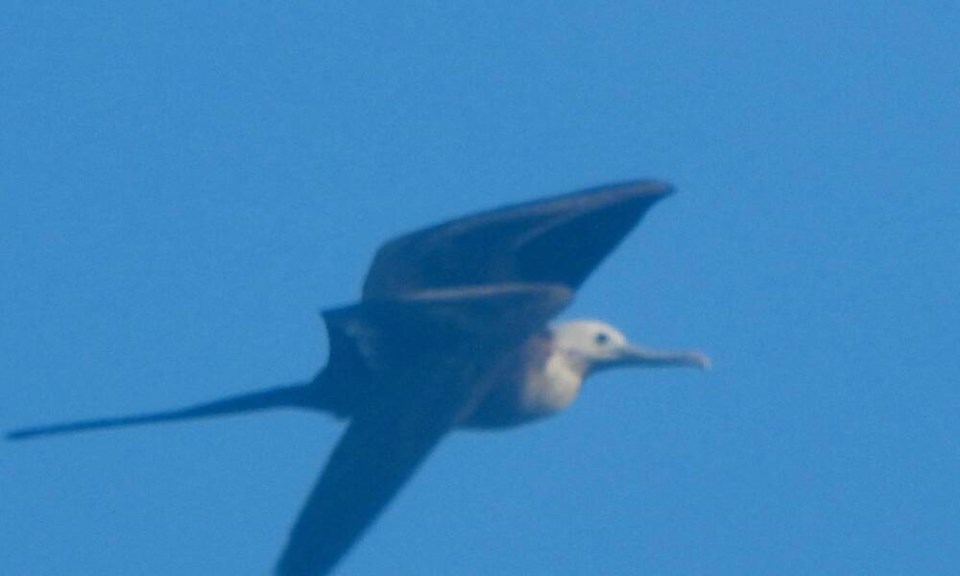A tropical bird was spotted this week off Oak Bay, thousands of kilometres from its typical range between northern Mexico and Peru.
The juvenile “magnificent frigatebird” was photographed by Trial Island lighthouse keeper John Gillivet on the evening of May 31. It hasn’t been seen since, according to watchers.
Jacques Sirois, chair of the Friends of the Victoria Harbour Migratory Bird Sanctuary, said it appears to be the first confirmed sighting of the magnificent frigatebird in the capital region.
“This bird is more at home in the Sea of Cortes than in the Salish Sea,” Sirois said.
The Cornell Lab of Ornithology calls the magnificent frigatebird a master aerialist that effortlessly floats, using its deeply forked tail to steer.
Mature males are known for striking red pouches on their throats that inflate to attract females.
The birds are also referred to as “pirates of the sky,” according to the Cornell Lab — they’re known to harass other birds until they regurgitate recently captured food, which the frigatebird then snatches in midair.
Sirois said other rare birds from southern climes seen in the Trial Island area recently include a Nazca Booby on July 23, 2022, small numbers of Brown Pelicans every year and numerous Heerman’s Gulls every summer.
He said the magnificent frigatebird sighting brings the total number of bird species confirmed on in the capital region to 425, more than any other region in Canada.
Rocky Point Bird Observatory dubbed the region the “birding capital of Canada” after conducting research into how many species have been spotted.
Data from Cornell Lab’s eBird app, which allows birders to log sightings, and from paper records dating back to the 19th century indicate that the region has seen the most individual bird species of any city region in Canada.



